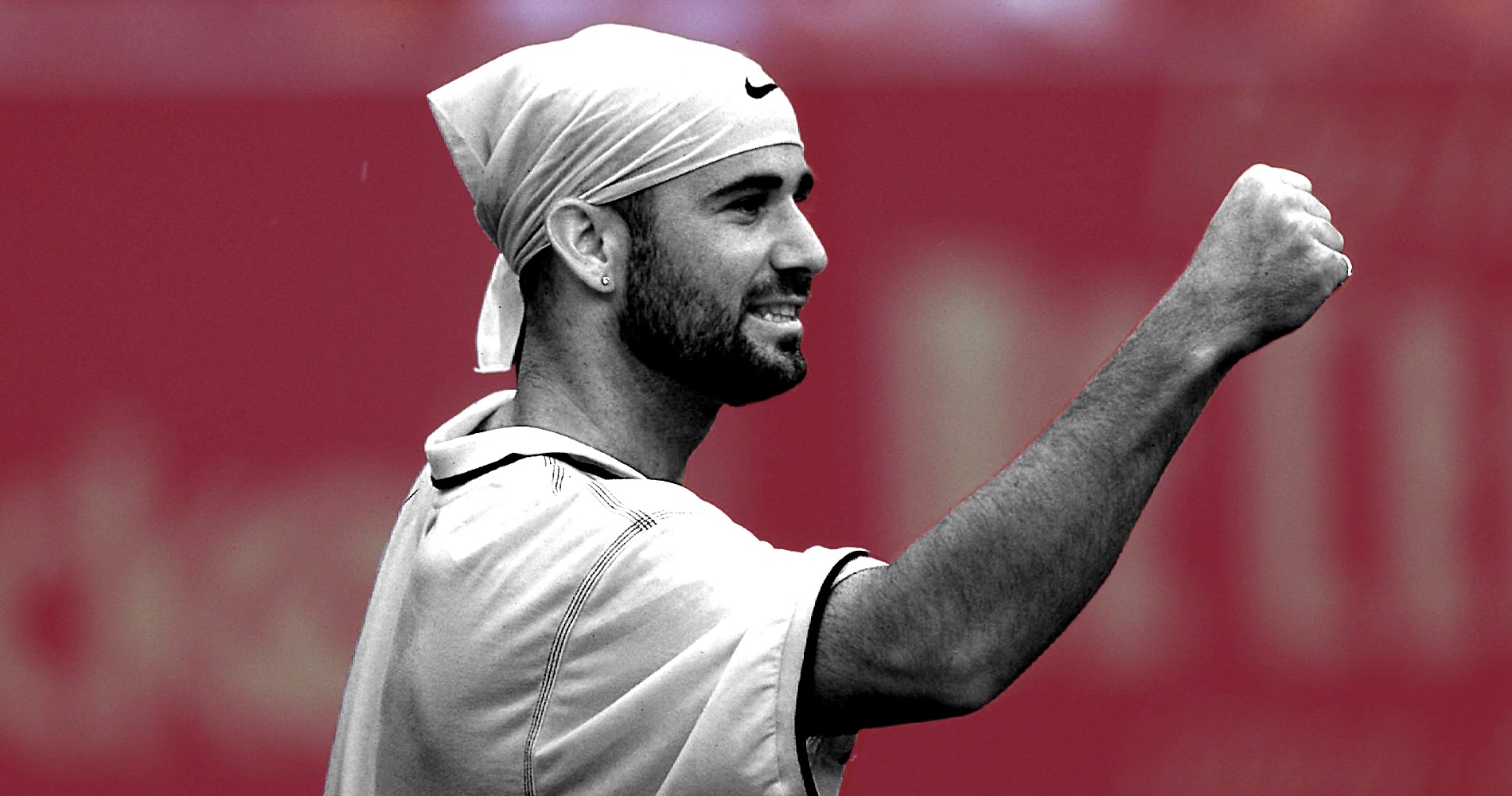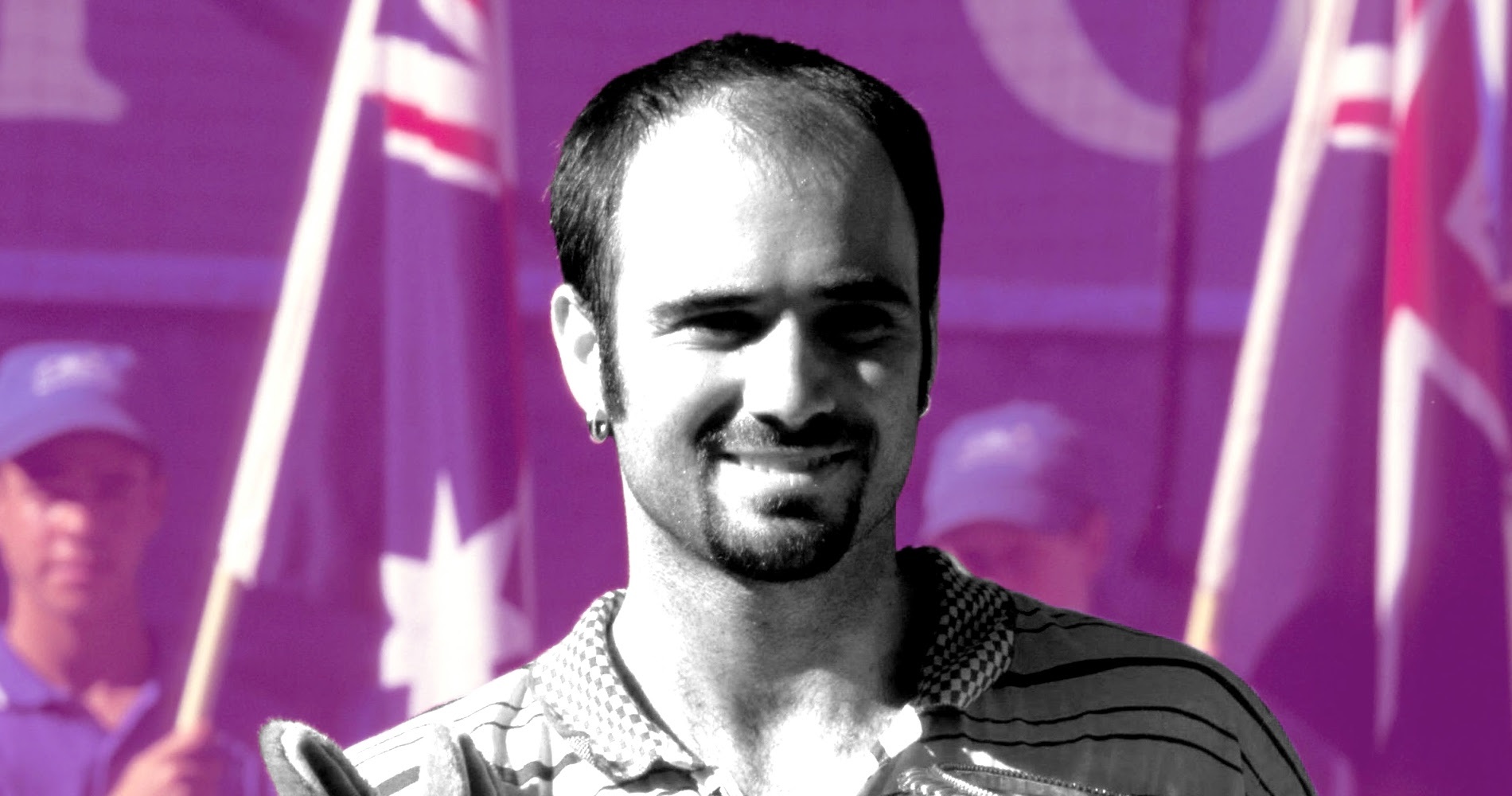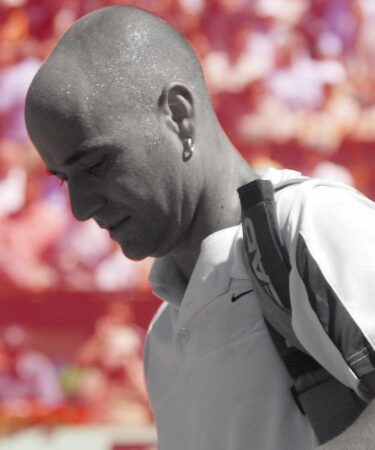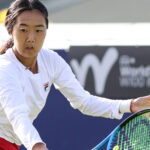June 6, 1999: The day Andre Agassi finally won Roland-Garros
Every day, Tennis Majors takes you back in time to relive a tennis event which happened on this specific day. On June 6, 1999, Andre Agassi finally became the champion at Roland-Garros and completed the career Grand Slam
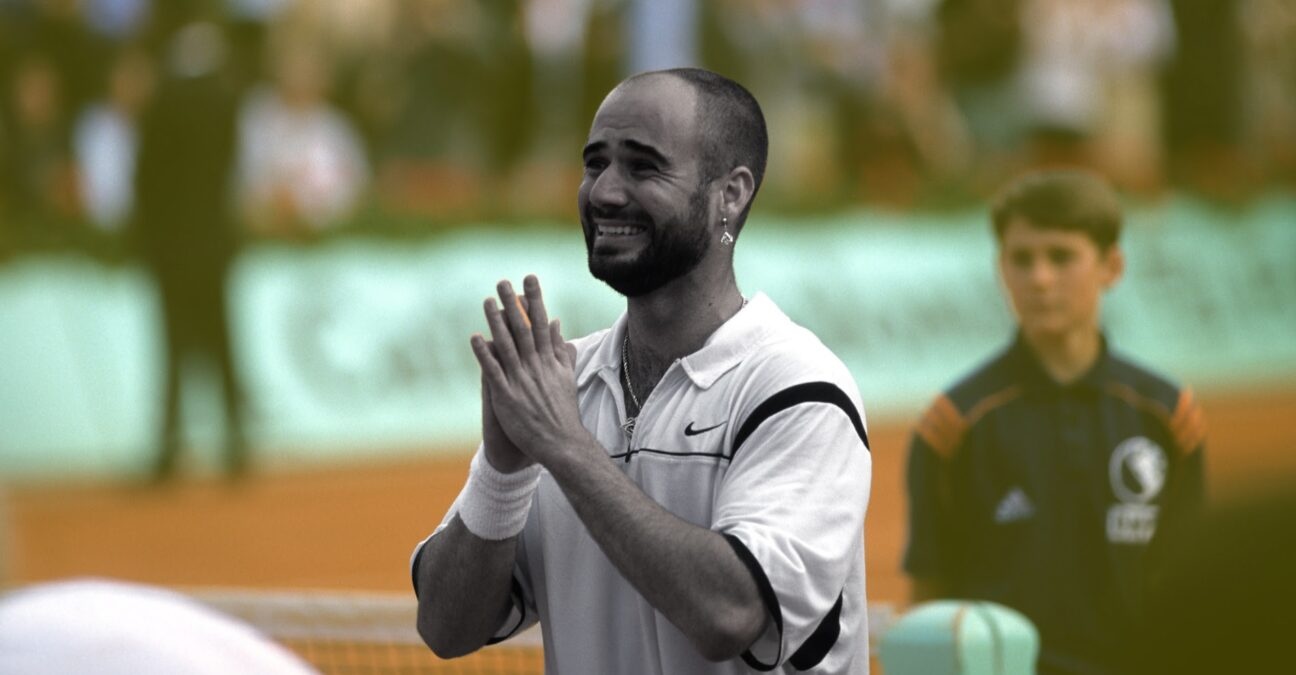 On this day – Agassi
On this day – Agassi
What happened exactly on that day: Agassi finally triumphed at Roland-Garros
On this day, June 6, 1999, Andre Agassi finally triumphed at Roland-Garros, eight years after his second consecutive final loss in Paris. To achieve that feat, he had to come back from two sets to love to win a dramatic final against Andrei Medvedev, 1-6, 2-6, 6-4, 6-3, 6-4.
By adding the Roland-Garros title to his list of achievements, Agassi became the first player to complete a career Grand Slam since Rod Laver in 1969 (the Australian also won all the four Grand Slam titles that same year), and became the first player to win the four Majors on four different surfaces.
The players: Andre Agassi and Andrei Medvedev
- Andre Agassi: From the top of the world to the ATP Challenger tour and back
Andre Agassi, the Las Vegas Kid, was a tennis legend. He had turned professional in 1986 and had soon become one of tennis’ biggest superstars, thanks to his amazing tennis skills but also to his interesting outfits, including the iconic denim shorts and the pink lycra bicycle shorts (worn underneath). Taught by his father and at the Nick Bollettieri Academy, his game relied on a great return (the best of his time) and on hitting the ball on the rise off of both sides wings with incredible power, which was revolutionary at the time and later copied by generations of tennis players.
After finishing runner-up three times, once at the 1990 US Open and twice at Roland-Garros (1990 and 1991), he claimed his first Grand Slam title at Wimbledon in 1992, defeating big server Goran Ivanisevic in the final (6-7, 6-4, 6-4, 1-6, 6-4). This title was followed by the 1994 US Open and the 1995 Australian Open, the only time he beat his eternal rival, Pete Sampras, in a Grand Slam final (4-6, 6-1, 7-6, 6-4). He became world No 1 shortly after this success, on April 10, 1995, for 30 weeks.
In 1996 and 1997, despite winning a gold medal at the 1996 Olympic Games in Atlanta, Agassi had a very hard time and his ranking dropped as low as No 141 in the world. Displaying great humility, he went back to play on the Challenger tour at the end of 1997 to regain his confidence. He slowly came back to the top in 1998, finishing the year as world No 6, although his Grand Slam results were disappointing.
In 1999, his best result before Roland-Garros was a semi-final loss to Jan-Michael Gambill in Scottsdale, and Agassi had played only one clay-court tournament, in Rome, where he lost in the round of 16 against Patrick Rafter. The American was ranked No 14 in the world when the 1999 Roland-Garros event started.
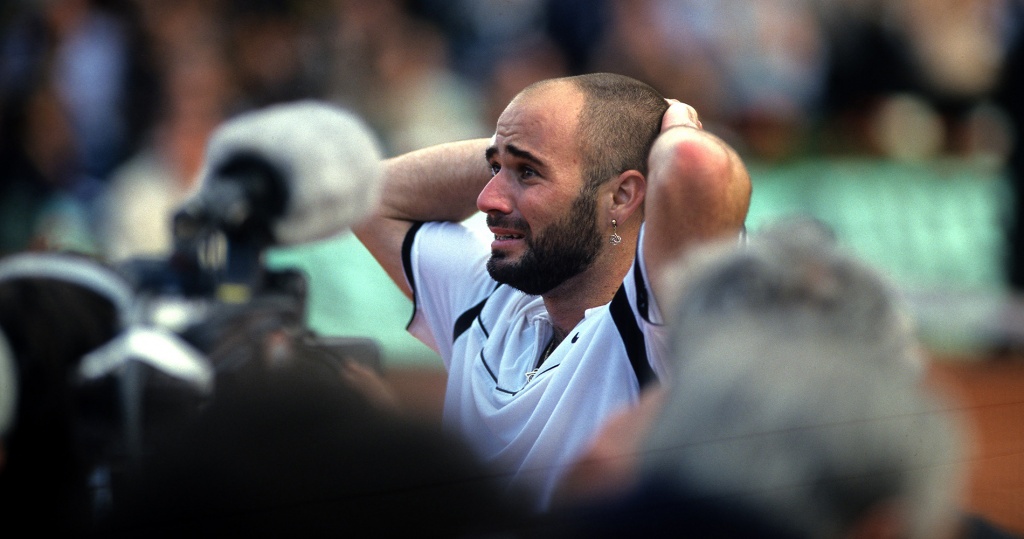
- Andrei Medvedev: the former world No 4 who was now ranked in the top 100
Andrei Medvedev was born in 1974, in Kiev. After claiming his first tile in Genoa, at 17 years old, he had an early breakthrough, as his peak years were 1993-1994, before he even turned 20. In these years, he became the third teenager after Mats Wilander and Boris Becker to earn $1 million in prize money, claiming five of his 11 career titles.
He was particularly dangerous on clay; he reached the semi-finals at Roland-Garros in 1993 and the quarter-finals in 1994 (each time defeated by the eventual champion, Sergi Bruguera), and claimed two Masters 1000 titles on this surface in 1994 – in Monte-Carlo and Hamburg.
In May 1994, he achieved his best ranking as world No 4. In the following years, nagged by various injuries (back, shoulder), he exited the top 10 and remained a solid top-40 player, claiming two more Masters 1000 crowns in Hamburg in 1995 and 1997, without any remarkable Grand Slam results.
In 1998, his ranking dropped dramatically and in early 1999, struggling with motivation, he left the top 100 for the first time since 1992. He arrived in Paris as the world No 100 and had not won two matches in a row since the start of the season.
The place: Stade Roland-Garros
The story took place at Roland-Garros, Paris. The venue, located in the west of Paris at the edge of the Bois de Boulogne forest, had been hosting the French Grand Slam since 1928. It was the first and now the only Grand Slam to be played on clay, the slowest surface, which made it the hardest tournament to win from a physical perspective.
Both players had a specific relationship with Roland-Garros. For Medvedev, it was the only Grand Slam tournament where he had reached the semi-final and gotten past the fourth round more than once. For Agassi, it was a place filled with heartbreaking memories. The Las Vegas kid had lost two finals in a row here while being the favourite, against Andres Gomez (1990) and Jim Courier (1991). In the meantime, he had won the other three Grand Slam tournaments and Roland-Garros was the only major title missing from his resume.
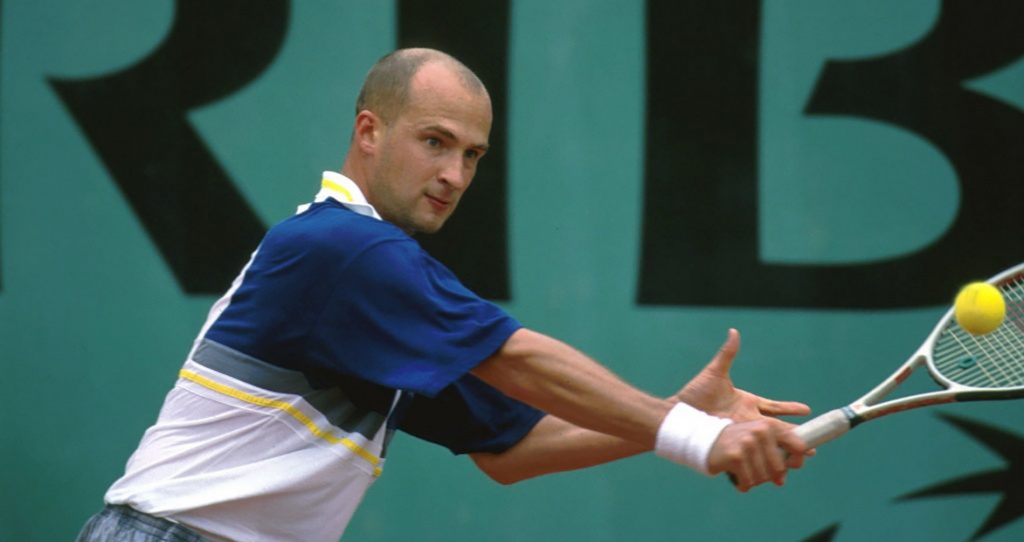
The facts: Agassi comes back from the brink to complete his Grand Slam collection
It is safe to say that the 1999 Roland-Garros final featured two unexpected players. On one hand was Agassi, who had not gone past the fourth round here since 1995 and not past the second round in his two most recent appearances. Since his early years, his game had evolved to be more effective on hard courts, and his clay-court season had been way too short for someone seriously aiming for the Paris title. In fact, in his autobiography, he would quote himself, responding to his coach talking about winning Roland-Garros: “Man, that ship had sailed”.
On the other hand, there was Medvedev, the former prodigy, frustrated by injuries and his poor recent results. Ranked No 100, he was one of the last players to enter the main draw in Paris automatically. Two months earlier, in Monte-Carlo, he was thinking about quitting tennis. He was talked out of it by none other than Agassi, who gave him a pep talk as the two players were having a late night.
Now, these two players were facing each other in the Roland-Garros final. Agassi had managed to eliminate the defending champion, Carlos Moya, in the fourth round (4-6, 7-5, 7-5, 6-1). Medvedev had defeated world No 2 Pete Sampras, in the second round (7-5, 1-6, 6-4, 6-4), and Gustavo Kuerten, who was one one of the favourites, in the quarter-finals (7-5, 6-4, 6-4).
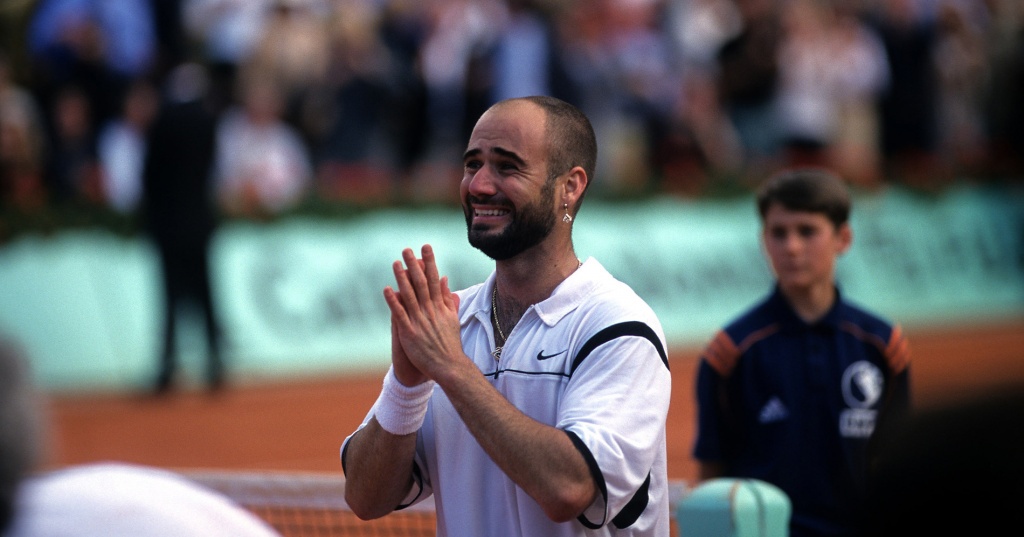
After the break, Medvedev faced a different Agassi. Yet, the American had to face a break point that was almost a match point at 4-4. He saved it with courage, attacking the net. From his own recollection, he then sat down as he was switching sides and thought: “If I only play four good points I’m going to win the set”. He did.
Now the dynamics had changed. Agassi was playing at his best level, hitting the ball on the rise and running Medvedev around the court. He dominated the two next sets and, after two hours and 52 minutes of play, Medvedev missed one last return. 12 years after his first appearance in Paris, nine years after losing his first major final to Gomez, Andre Agassi had finally triumphed at Roland-Garros.
What next? Agassi climbs back to No 1 while Medvedev retires in 2001
That year, after finishing runner-up to Sampras at Wimbledon (6-3, 6-4, 7-5), Agassi would claim a second US Open crown and regain the No 1 spot for 52 more weeks. In the following years, he would add three more Australian Open titles to his career achievements (2000, 2001, 2003), finishing with a total of eight Grand Slam titles and would appear at the top of the ATP rankings for the last time on September 7, 2003.
In 2005, aged 35, he would still reach another Grand Slam final in New York, where he was defeated by Roger Federer (6-3, 2-6, 7-6, 6-1). Only in 2006 would he leave the top 10 once and for all. Playing only eight tournaments, he would end his career at Flushing Meadows. After delivering a last epic fight to prevail against world No 8 Marcos Baghdatis (6-4, 6-4, 3-6, 5-7, 7-5), he would be defeated by Benjamin Becker in the third round, 7-5, 6-7, 6-4, 7-5.
Thanks to his Roland-Garros final, Medvedev would be back in the top 30 and would climb back as high as No 20 in May 2000. Defeated by future runner-up Magnus Norman in the fourth round of the 2000 Roland-Garros, his ranking would then continuously drop, especially after an ankle injury that would force him to end his season in July.
Back on the tour in 2001, the Ukrainian started to play more sporadically in the second half of the season and retired from professional tennis at the end of the year, beating a top 10 player for the final time (Tommy Haas, 3-6, 7-6, 6-4), before losing to Stefan Koubek (7-6, 6-2).

